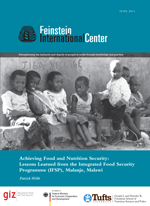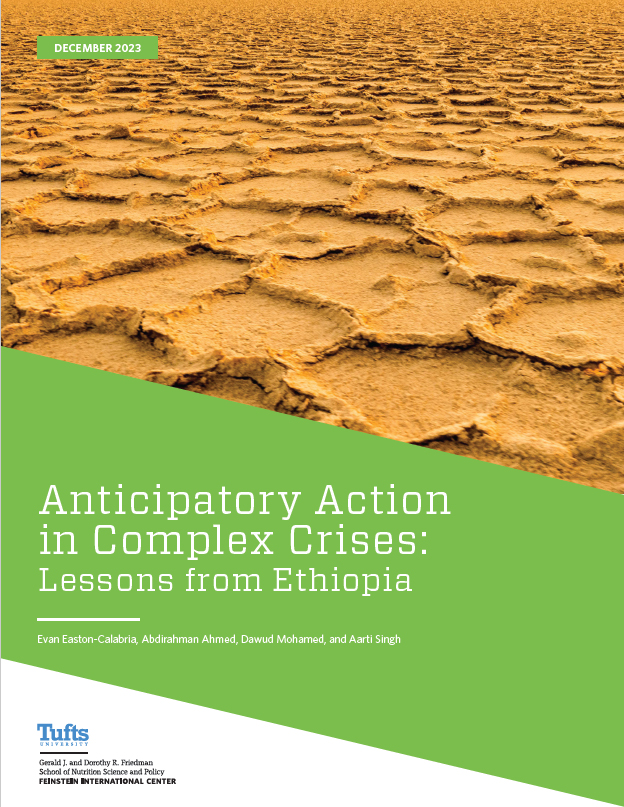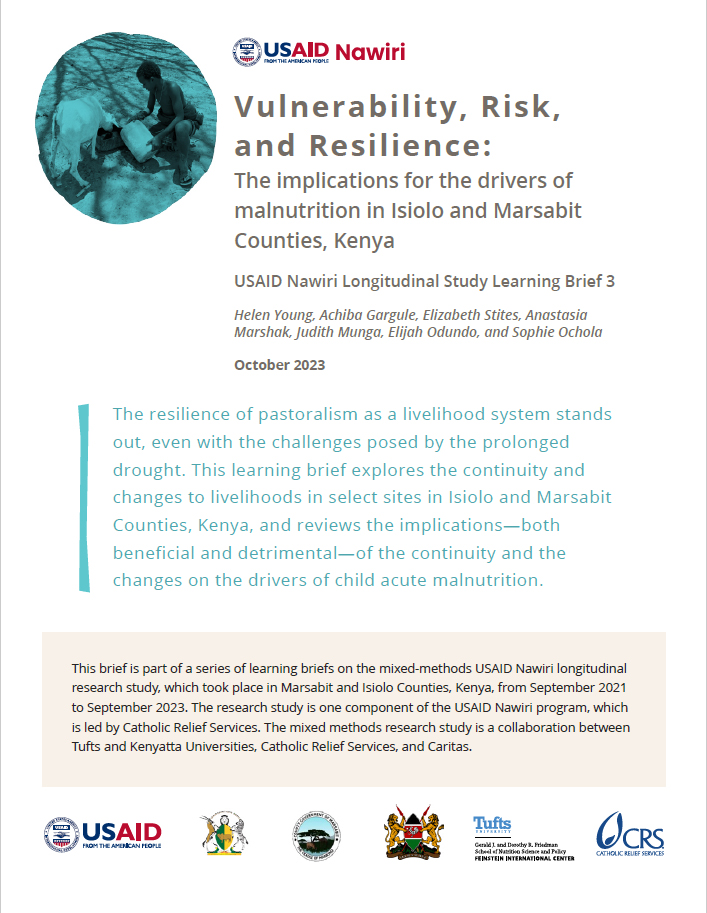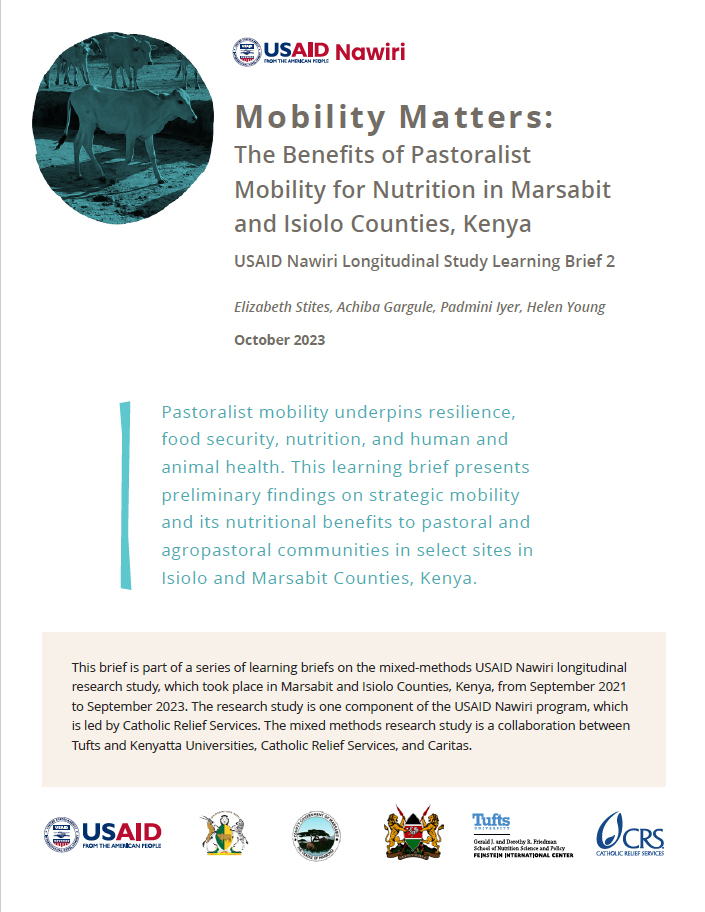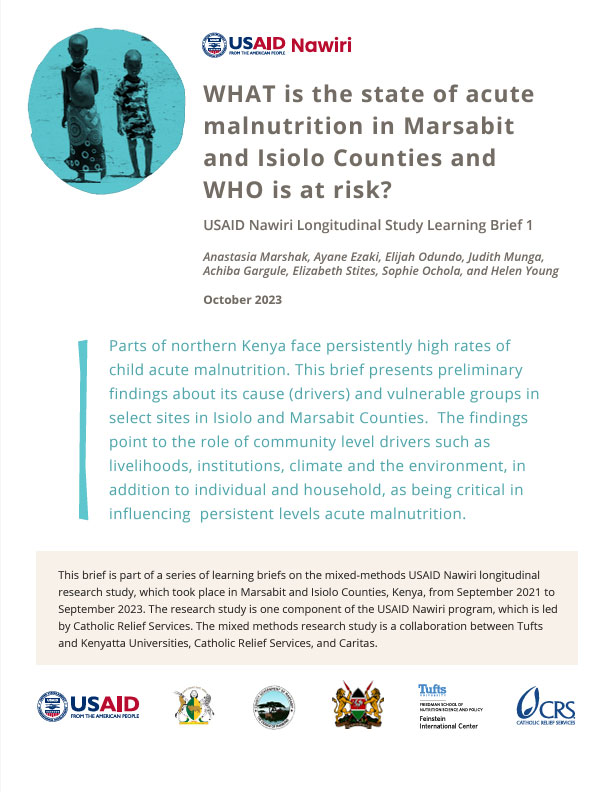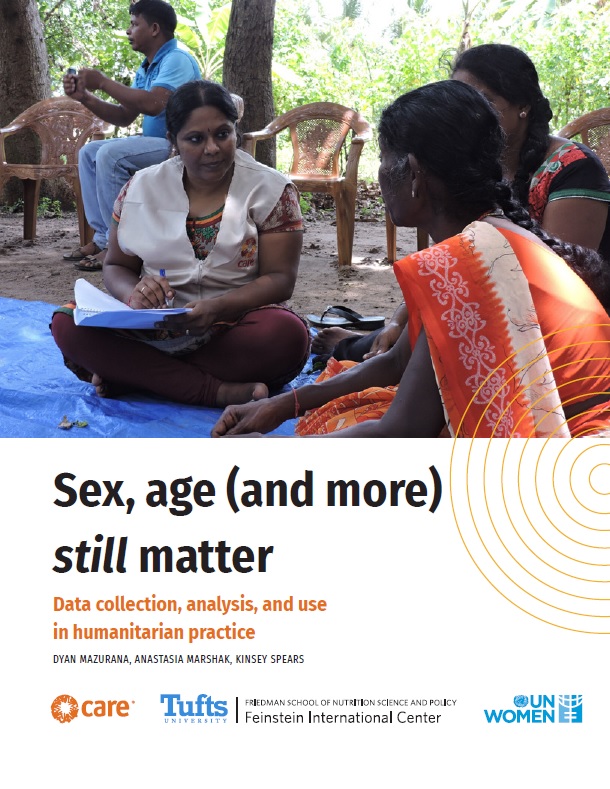Calls have been made recently for new approaches to the design and implementation of interventions aimed at achieving household food security; approaches that address more than just food availability by integrating actions enhancing food access and utilization as well. But what exactly should be ‘integrated’ and how? This report represents a lessons learned assessment of an integrated agriculture, nutrition, and health intervention implemented in Malawi in the late 1990s and early 2000s. The review contributes to the ongoing international search for best practices in programming for food security.
The Integrated Food Security Programme (IFSP) was designed as a self-reinforcing, synergistic program implemented in an area of extreme food insecurity. Nevertheless, the endline evaluation in 2004 reported that the intervention had achieved most of its aims. Child nutrition was improved (reaching the target set of a 10% reduction in the prevalence of stunting), and most sectoral targets in agriculture, income generating, and infrastructure development were also achieved. At roughly US$59 per household per year, the cost of the package of interventions integrated on the ground compares well with a range of other integrated programs in Malawi and elsewhere in the world. Importantly, many of the gains have been sustained.
Questions raised by the review that should frame debate on future integrated programming models include:
1. Could the same outcomes have been achieved for less cost?
2. If so, what is the minimum versus desirable menu of interventions that generate the best possible outcomes for least cost?
3. Would the unit cost of the package introduced increase or fall if taken up at scale across the country?
4. Should packaged interventions seek to promote absolute change or accelerate relative change (to bring “lagging” regions or communities up to par with the rest of their country)?
5. Can integrated programs be designed to buffer future shocks, not just resolve pre-existing vulnerability to food insecurity, and what would that add to the cost of a package of integrated services and inputs?

